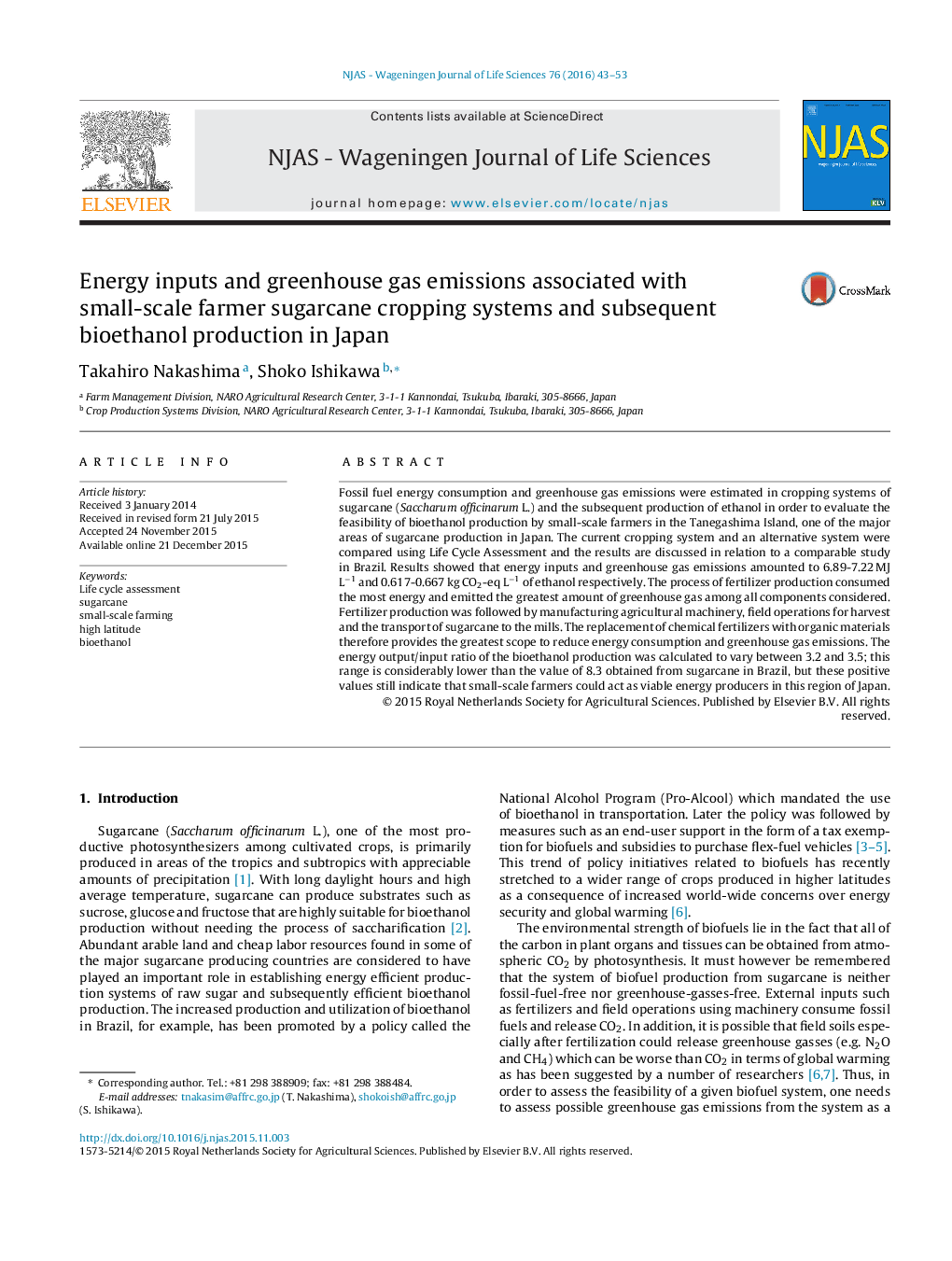| کد مقاله | کد نشریه | سال انتشار | مقاله انگلیسی | نسخه تمام متن |
|---|---|---|---|---|
| 4501234 | 1624061 | 2016 | 11 صفحه PDF | دانلود رایگان |
• LCA was conducted on ethanol production from sugarcane grown on small-scale farms.
• Fossil fuel energy input and GHG emission were assessed using local and regional data.
• 6.9-7.2 MJ and 0.62-0.67 kg CO2-eq were required/emitted to produce 1L of ethanol.
• Energy balance (3.2-3.5) was less efficient than sugarcane study in Brazil (8.3).
• Small-scale farmers could still function as viable energy producers in study area.
Fossil fuel energy consumption and greenhouse gas emissions were estimated in cropping systems of sugarcane (Saccharum officinarum L.) and the subsequent production of ethanol in order to evaluate the feasibility of bioethanol production by small-scale farmers in the Tanegashima Island, one of the major areas of sugarcane production in Japan. The current cropping system and an alternative system were compared using Life Cycle Assessment and the results are discussed in relation to a comparable study in Brazil. Results showed that energy inputs and greenhouse gas emissions amounted to 6.89-7.22 MJ L−1 and 0.617-0.667 kg CO2-eq L−1 of ethanol respectively. The process of fertilizer production consumed the most energy and emitted the greatest amount of greenhouse gas among all components considered. Fertilizer production was followed by manufacturing agricultural machinery, field operations for harvest and the transport of sugarcane to the mills. The replacement of chemical fertilizers with organic materials therefore provides the greatest scope to reduce energy consumption and greenhouse gas emissions. The energy output/input ratio of the bioethanol production was calculated to vary between 3.2 and 3.5; this range is considerably lower than the value of 8.3 obtained from sugarcane in Brazil, but these positive values still indicate that small-scale farmers could act as viable energy producers in this region of Japan.
Journal: NJAS - Wageningen Journal of Life Sciences - Volume 76, March 2016, Pages 43–53
